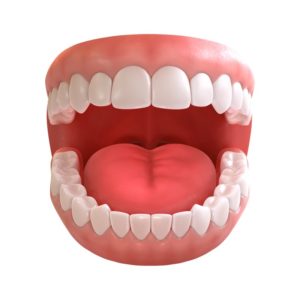
When you understand the parts of the mouth, it makes sense you would be more motivated to stay on top of your oral health because you realize why it matters. You probably began brushing your teeth as a child simply because you were told to do so, but as you grew up and started to understand why toothcare matters, the more likely it became that you would be consistent about brushing and not depend on someone to encourage you to do it. Keep reading as your dentist in Houston discusses the human mouth beyond just your teeth.
What Benefits Do My Tongue, Lips, and Cheeks Offer My Teeth?
The tongue is a powerful muscle that facilitates chewing, swallowing, speaking, and tasting food. Taste buds, sensory receptors on your tongue, enable you to enjoy the food you eat. In fact, the human tongue can have up to 10,000 taste buds, which help you detect sweet, salty, bitter, and savory flavors. The pressure the tongue applies within the mouth helps the oral cavity maintain its shape and keeps the teeth properly positioned.
Your lips and cheeks contribute to everything from forming your facial expressions to breathing and speaking. They also keep food and saliva in your mouth while you chew. These strong muscles brace your teeth to keep them in the proper position.
How Do My Salivary Glands, Gums, and Alveolar Bone Contribute to a Healthy Mouth?
You have six salivary glands that produce the clear liquid known as saliva, which is made up predominantly of water and contains substances that break down food to begin the digestive process. Saliva also moistens your mouth to help with speaking, chewing, and swallowing. Plus, it washes bacteria from your teeth and gums. The proteins and minerals in saliva play a vital role in protecting the enamel, as well.
Your mouth’s gum tissue holds your teeth in place and protects the roots from decay. You may be familiar with gum disease, and the main symptoms include swelling and chronic bleeding. These warning signs are important because unchecked gum disease can lead to tooth and bone loss.
On the other hand, the alveolar bone is not a well-known portion of the mouth. The roots of your teeth anchor them in your jawbone. The alveolar bone surrounds the roots to stabilize the teeth.
What Are My Temporomandibular Joints Used for?
This part of the mouth is rarely discussed. Your two temporomandibular joints facilitate your ability to chew, speak, and swallow. They also enable your mouth to open and close, as well as allow you to move your lower jaw forward and side to side.
These joints are located on both sides of your head near your ears and work together with your jawbone, facial muscles, and ligaments. Any disruption to the synchronization of this pair, which can happen if you grind your teeth at night, can result in facial pain, difficulty in chewing, and jaw stiffness.
If you take diligent care of your teeth, well done, and certainly try to keep that ball rolling. But be sure to keep the full environment in your mouth functioning properly. Rinse with an antimicrobial mouthwash, brush your tongue and your gums, and visit your dentist in Houston twice each year so they can check your entire mouth for signs of disease in addition to providing the thorough cleaning that will keep your oral health in stellar status.
About the Practice
At Tamborello Dental Associates, our three dentists and dedicated staff are ready to provide you with a full-service dental experience. We offer an array of high-quality treatments in a comfortable environment. We understand your schedule can be hectic, so we offer early morning and evening hours. As you can see from this blog post, a lot goes into your oral health. If you have questions about any parts of the mouth, be sure to ask them during your next dental cleaning and exam. You can schedule an appointment with your dentist in Houston on our website or by calling (713) 522-7540.

